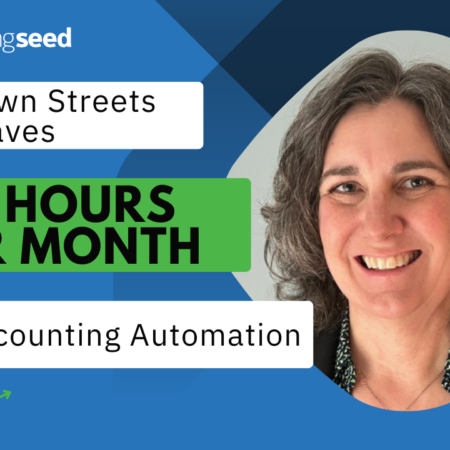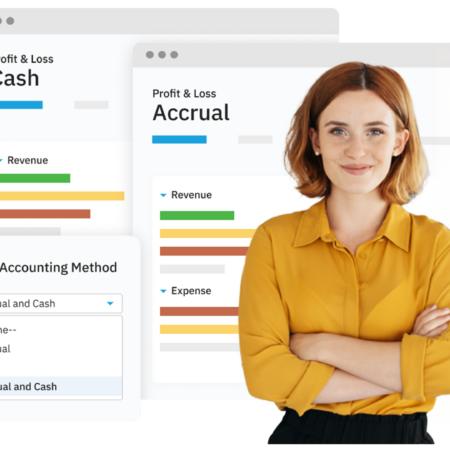
The days when small businesses never had to think in any currency but dollars are long gone. The 21st century economy is globalized and grows steadily more so. For example, with tools like the internet and wire transfers, it’s easy to do business with suppliers in Bangkok or hire remote workers from Ottawa to Cairo.
Even if your business is localized in the U.S. you may still need to deal in foreign currency to pay overseas suppliers. That requires a knowledge of foreign exchange accounting or the use of sophisticated software such as Accounting Seed.
Newsletter sign up
"*" indicates required fields
What is Foreign Exchange Accounting?
Foreign exchange accounting is a set of rules for tracking business transactions in foreign currencies. Suppose you purchase from a French vendor and agree to pay the invoice in euros. You have to convert the euros into the equivalent dollar amount before recording the transaction. The foreign currency accounting standard guides how you must do this.
Accounting for Foreign Exchange
If your company is entirely U.S.-centric — no overseas customers, employees or vendors — foreign exchange accounting isn’t anything you have to worry about. That may not be the case forever, though. The Small Business Administration says 98 percent of small businesses are exporters.
Many businesses rely on international suppliers in China and elsewhere, or outsource part of their workforce to the developing world. When you go global, you have to know how to pay international invoices and accept international payments.
Any time you do business in a currency other than your own, foreign exchange accounting comes into play. When doing business outside the United States, foreign currency translation rules require you think in terms of three different currency classifications.
Foreign Exchange Accounting Currency Classifications
The functional currency is the one your business normally uses in your operations. The transactional currency is the one with which you make or receive payment. The reporting currency is the one in which you record the transaction.
For a U.S. company, the dollar is both the functional currency and the reporting currency. For business deals within the U.S., where everyone uses the dollar, it’s also the transactional currency. If you’re shipping goods to Bahrain, however, the functional currency there is the dinar, to give one example of foreign currency.
If you buy raw materials from a Mexican supplier, their functional currency is the peso. Your reporting currency in foreign exchange accounting is always dollars but the transactional currency is negotiable.
Should You Accept International Payments?
It’s simplest for you to use dollars in all your transactions. This also reduces the risk that a change in the exchange rate will cost you money on a deal. However the same is true for your partners: an Indian firm will find it easier and less risky if the two of you make the transactions in rupees.
You may end up dealing with dollars in some cases and foreign currencies in another, depending on your negotiating skills and who needs to close the deal most.
You can account for dollar payments from overseas clients just as you would from American customers. Dealing with another currency when you accept international payments gets complicated. For example, you have to know what exchange rate to use for accounting.
Foreign Exchange Accounting Example
Suppose you’ve shipped $50,000 of inventory from your Virginia factory to a store in the UK. Under your foreign exchange accounting rules, your functional currency is the dollar, and theirs is the pound. They insist on using the pound as the transactional currency and you agree. All of this should be worked out in advance and written into a contract, work order, or purchase order.
In this case you send the invoice for the $50,000 along with the shipment. Your customer then pays the equivalent in pounds sterling, roughly £37,500 at time of writing. When you receive the money, the foreign currency accounting standard says you can’t automatically write down $50,000.
GAAP Rules for Foreign Exchange Accounting
Generally Accepted Accounting Principles (GAAP) require you to translate the payment amount into dollars using the current exchange rate or “spot” exchange rate. If the spot exchange rate is stable, you can use the average rate for the week or the month.
If payment is immediate, £37,500 will probably still equal $50,000. If your customer takes 30 days or 60 days to pay, it’s possible the exchange rate will change, which complicates the accounting. If, say, £37,500 is now worth $48,500, you have to report the loss. You record the payment in your cash account and the difference goes in an account for exchange rate losses. If the rate shifted the other way you’d record a gain.
Paying Overseas Employees
Paying overseas employees follows the same foreign exchange accounting principles but can be more complicated. Depending on the details of the arrangement, a foreign government may require you to register with them as an employer.
The rules vary country to country. It all depends on whether the individual is an independent contractor, an employer of an affiliate or subsidiary, or a U.S. employee temporarily overseas.
How to Pay International Invoices
There are multiple ways to pay clients, customers, overseas employees, and overseas independent contractors. A wire transfer lets you send money directly from your account to any other account in the world. It’s secure and costs typically $30 – $50, plus a 5 to 6 percent increase in the exchange rate.
The bank receiving the money may charge added fees. You can also use internet payment platforms such as PayPal or Gusto. Clients overseas can use the same methods to pay you. As with the transactional currency, both parties should agree on the method ahead of time.
Meeting Foreign Exchange Accounting Rules
The simplest way to tackle foreign exchange accounting is to automate the process. Accounting Seed’s software can handle billing customers and paying vendors for any currency. It can also record gains or losses from fluctuations in exchange rates, in accordance with GAAP. That way you never have to worry about the right exchange rate to use for accounting.
To automate your foreign exchange accounting with Accounting Seed, you’ll first enable its multi-currency functionality. To start, enable Salesforce’s multi-currency functionality, then step up and deploy Accounting Seed.
As long as a foreign currency is Salesforce supported, Accounting Seed lets you:
- Bill customers and receive foreign money in payment
- Enter and pay vendor invoices
- Create journal entries in any foreign currency
- Enter expense reports in any foreign currency
- Track gains or loss related to foreign currency exchanges
- Reconcile foreign bank and credit-card accounts
Setting Up Foreign Exchange Accounting Automation
It may take some effort to set up your software for foreign exchange accounting, but it’ll take much more work off your shoulders. Without an automated system like Accounting Seed, you’ll have to record the transactions yourself, which is considerably more time-consuming.
For example, suppose you sell $40,000 worth of goods to a company in Bahrain, using dinars as functional currency. Your contract commits you to accepting payment in a set amount of dinars, equivalent to $40,000 at the time of the transaction. When you make the sale, forex accounting rules require you to record $40,000 as a debit to accounts receivable and the same amount as a credit to cash.
In this example, your customer pays you by wire transfer two weeks later. Adjustments to the exchange rate mean the dinars are now worth $98,000. That requires an added exchange rate accounting entry. You’ll record a credit of $40,000 to accounts receivable, a debit of $39,000 to cash and a $1,000 debit to foreign currency exchange loss.
By contrast, with an automated system for foreign exchange accounting in place, all this happens in the background. That frees up your accounting team for more important jobs.
Automated is Easier
If you’re only doing overseas transactions once in a blue moon, the extra accounting work may not be prohibitively time consuming. But if you’re doing steady business with overseas vendors, customers, or employees in multiple countries, it can become an oversized task.
When you pay overseas suppliers under a manual foreign exchange accounting system, you have to keep track of multiple exchange rates, plus their rise and fall relative to the dollar. That demands more time, number-crunching, and mental energy. A powerhouse accounting software such as Accounting Seed can simplify the GAAP requirements for foreign business deals, and ease plenty of other accounting tasks. Contact us today for a consultation on how Accounting Seed can benefit you and your accounting team.
For more accounting resources for your business, read on:
- Top 7 Issues Accountants Face Today
- Accounting Cybersecurity: How to Keep Financial Data Safe and Secure
- DCAA Compliant Accounting Software: What to Look For
- What Are the International Accounting Standards (IAS)?
- Top 8 Reasons Why IT Implementations Fail
- What is Cash Disbursement in Accounting?
- Accrued Expenses: What Are They And How to Report Them?
- Intro to Accounts Payable and Purchase Order Accounting
See Accounting Seed in action
Get a close-up view of how accounting on Salesforce can eliminate the need for costly integrations—and silos of mismatched information—by sharing the same database as your CRM.



